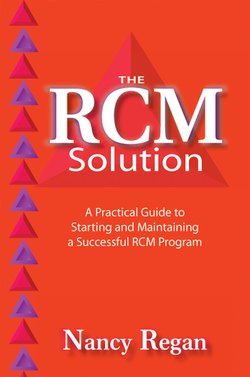Читать книгу The RCM Solution - Nancy Regan - Страница 8
На сайте Литреса книга снята с продажи.
ОглавлениеPreface
Reliability Centered Maintenance (RCM) is a time-honored, proven process that has been employed all over the world for over four decades in nearly every industry. Because its principles are so robust, so powerful, and so versatile, the process has stood the test of time and human meddling. There are many RCM processes on the market that embody different approaches; many of them depart significantly from what was intended by the original architects of the process, Stanley Nowlan and Howard Heap. The basic principles of RCM have been criticized and manipulated because it is often wrongly believed that RCM takes too long to perform, or it’s too expensive, or all of the steps are simply unnecessary. This just isn’t so. RCM is a majestic process that gives an organization the opportunity to transform into a more safe and cost effective institution. However, the process must be performed correctly by the right people.
This book is intended to be a straightforward, no-nonsense presentation of what RCM is and how it can be applied to maximize results. The RCM Solution embodies minimal theory. Instead, it embraces the majesty of RCM’s basic principles and sets forth a very common sense approach to achieving powerful results. As retired British Royal Navy (RN) Commander and former head of the RN’s RCM program Andrew Matters once told me, RCM is nothing more than “common sense applied to physical assets.” In that spirit, this book espouses exactly that. The RCM Solution is intended to be an introduction to RCM principles.
Anyone who knows me knows that I am an RCM zealot. I sincerely believe that if an organization chooses to employ RCM, it should be done so correctly. Nevertheless, as I gained more experience in the field, I came to understand that RCM cannot be done on all equipment simply because there aren’t enough resources to do so. I also realized that not all assets require the rigor that RCM embodies. It was then that I embarked upon formulating less robust tools that can play a significant role in an organization’s transformation. Therefore, this book introduces other asset management processes that embody RCM principles. But they are just that—other processes. They are not RCM and should be used responsibly—not as an excuse to use an alternative to full-blown RCM.
The intention of this book is to cut through all the noise, marketing, and false information about the process and simply set forth the principles of RCM in a way that can inspire organizations in starting and maintaining a successful RCM program. I have facilitated RCM using the techniques introduced in this book on assets ranging from plant equipment, mobile ground equipment, to aircraft for over 13 years. What I know is that if the principles of RCM are used correctly with the right people, the results can be transformative. I have seen it first hand.
During my RCM practitioner training I asked a question of my mentor, the late John Moubray, when he was presenting RCM theory because I thought I detected an inconsistency in the lesson. He simply looked at me and said “listen to the music, not the words” and he quickly moved on. The lesson was to recognize the versatility of RCM. RCM principles are like the paints that an artist uses. The same paints used by ten different artists will produce ten different paintings. How the paints are used is what determines if a masterpiece unfolds. So too are the principles of RCM.
This book comes from my heart. Its words are not only what I believe to be true, but what I know to be true. John trained his network members to be responsible custodians. He said it best when he affirmed “we are here to promulgate the principles we believe to be best practice and in so doing make the world a safer place for all who live in it.”
During another conversation, John described how RCM principles could be used better in a particular industry. When I asked him why they weren’t doing it better, he responded by simply saying “because they’re doing the Waltz.” When I asked him why they were doing the Waltz, he said “because no one is playing the Tango.”
May I have this dance?
Nancy Regan
Madison, Alabama
May 2012
nancyregan@theforceinc.com
